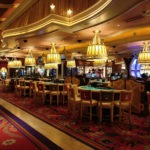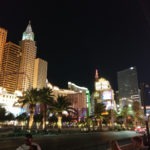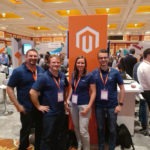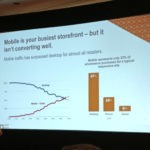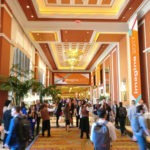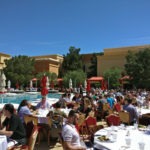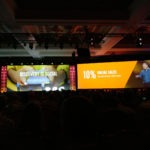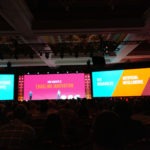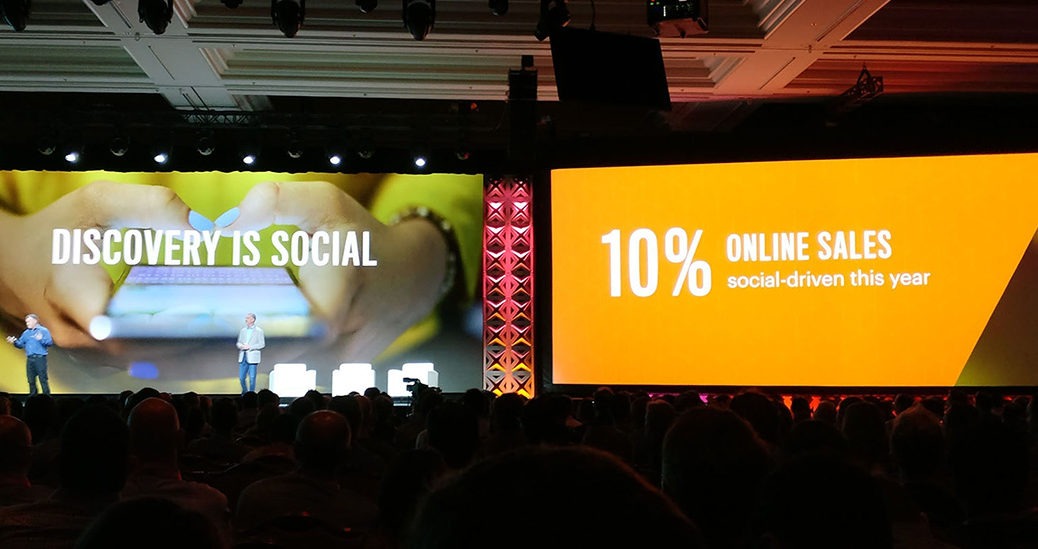
Review of the Magento Imagine 2017 from a personal point of view and a frontend perspective
The Imagine: The Magento event as such! To me as an USA newbie on the one hand interesting because the conference takes place in Las Vegas, to me as a frontend developer on the other hand interesting because you can learn much about how Magento itself, but the community as well – like other developers, agencies and webshop operators – are working with the e-commerce platform and continuously developing it further.
Let’s start at the beginning: Las Vegas is truly that “amazing” – to speak like a real American – as you would imagine. The city is totally crazy and so surreal like I’ve never seen before. Be it the style of the hotels, the sparkling fountains at the strip, the beer, the casinos, the restaurants, the advertising banners in the city: Everything was stepped up quite a bit in kitsch, glamour and exaggeration. Incredible! I was particularly impressed by the peace and serenity that prevails. Nothing is too overrun by lots of people, there are hardly any traffic jams or big crowds and you always get a parking lot. We people from the Rhein-Main Area in Germany are used to something completely different. The typical eating culture wasn’t exactly that compatible to my diet as well… After the calorie reduced “Fit Slam” breakfast wasn’t such as good as it seemed, I switched to the “French Toast” recommended by Ralf. What can I say: That’s what Americans are really good at!! For something like this you gladly suspend your strict diet (But I don’t know how someone could withstand this for more than a week).
3 days Imagine
Not only the city, or the Hoover Dam and the Grand Canyon were very impressing, but the Magento Imagine as well! Over 2700 attendees found themselves in the magnificent and partially giant conference rooms of the Wynn Hotel. The mass of enthusiastic Magento companions single handedly lead to a motivation boost that you would really want to share with everyone, once you arrive back home.
During the three conference days there where several presentations on the agenda, you could choose from. To me, the decision was easy, because the manageable number of frontend presentations never took place at the same time. But even if there weren’t that many, they had a particular importance because of the presenters that often came from Magento itself.
Mobile and mobile payment
Above all in those presentations stood the growing and ever more relevant e-commerce target group: the mobile users. Sure, smartphones are available for a long time now, but the digital shopping-process took place at the desktop PC in the past – this has changed a lot in the meantime. Ben Marks (Magento Evangelist) and Jon Higby (PayPal) showed in their presentation, how demanding mobile users are: a single input field too many and the user leaves the site and cancels the shopping process. Especially the payment process in the mobile online shop is one of the biggest challenges to the website owners. Providing the user with a payment method that is specifically suited for his device (i.e. Apple Pay or Android Pay) he can comfortably complete his order with just one click. Through a better payment process and an optimized user experience (whereby a responsive design not necessarily results in a better user experience) customers, that currently cancel their buying process, could be won. Those make up approximately 50% of the revenue!
By the way, not only in that presentation the Braintree module, which is already delivered with Magento 2, was mentioned in association to the payment process. This payment solution by PayPal provides – besides PayPal – several other payment methods including the above-mentioned Apple Pay and Android Pay methods.
Progressive Web Apps
In a Presentation of Adam Brown (Gorilla Group), Peter McLachlan (Mobify) and James Zetlen (Front-End Architect of Magento) a relatively new technology was widely advertised, which is an alternative to the common responsive design: the “Progressive Web Apps”. This refers to websites, that hardly optically distinguish from a mobile app. Furthermore, they are fast and respond to user inputs and gestures as fluent as a native app. The technical implementation is done using the standard web technologies HTML, CSS and Javascript, and because they open in a browser, they are capable of running equally on all devices. The users even can create desktop icons to start them up quick like an app, and they are theoretically offline useable as well. Even if this seems – described like that – wonderful and easy, it is nevertheless a challenge in practice. The offline-usage alone has to be thought out well, and the performance and fluent usability isn’t programmed by itself. To me however it’s a great motivation boost to accept that challenge and deal with that subject in depth. Super thrilling!
UI Components
Another challenge for us developers since Magento 2 are the so called UI Components. These form a System that allows to build up modular user interfaces, like forms and data-tables, that are known from the admin backend. But also many parts of the shop frontend are based on these components but their functionality and structure are very complex. James Zetlen (Front-End Architect of Magento) explained in his presentation “Everything Was UI Components & Nothing Hurt” why they need to be so complex and he gave us an overview of the current status and an outlook on further development. Beside showing us the advantages and also the difficulties still to be mastered, he encouraged us and invited us to work with the UI Components and to use them. Magento is open for feedback and the “developer happiness” is important for them: so let’s start with it! 🙂
Highlight: DevExchange
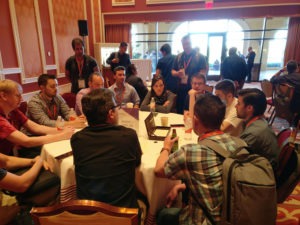
Apropos talking of feedback: The absolute highlight of the Imagine this year for me was an event that took place on last day of the conference. The so called “DevExchange”. Therefore, there was a selection of topics before through the community and for each of this topics there was a table and you were free to sit at the table you were interested in. Immediately suspenseful discussions raised up, great ideas were born and a lively exchange among the developers on the individual topics came up. Beside a lot of backend issues there were two frontend talks, which of course I did not miss (A summary of the front-end theme has already been published by Alan Kent, Magento Chief Architect). I mostly appreciated that at each table a Magento core developer participated, who discussed with us, as well as answered questions and collected the feedback of all the attendees. Thanks a lot for this!!
Altogether I came back from Las Vegas very enthusiastic! Thanks at this point to my netz98 colleagues Ralf, Alex and Christian (who published his personal recap already here) for the great trip!
In 2006 Maria has started her dual studies at netz98 GmbH as Bachelor of Arts in Media Design. She subsequently specialized in frontend development of several web interfaces and various Magento online shops. By now she works as Senior Frontend Architect and loves planning and organizing frontend architectures. Furthermore she is pushing forward the further development of internal frameworks and modules. In 2015 she gave a presentation about modular frontend development at the Meet Magento in Leipzig and additionally she published many articles about Magento frontend development, mobile optimization, design and usability.







